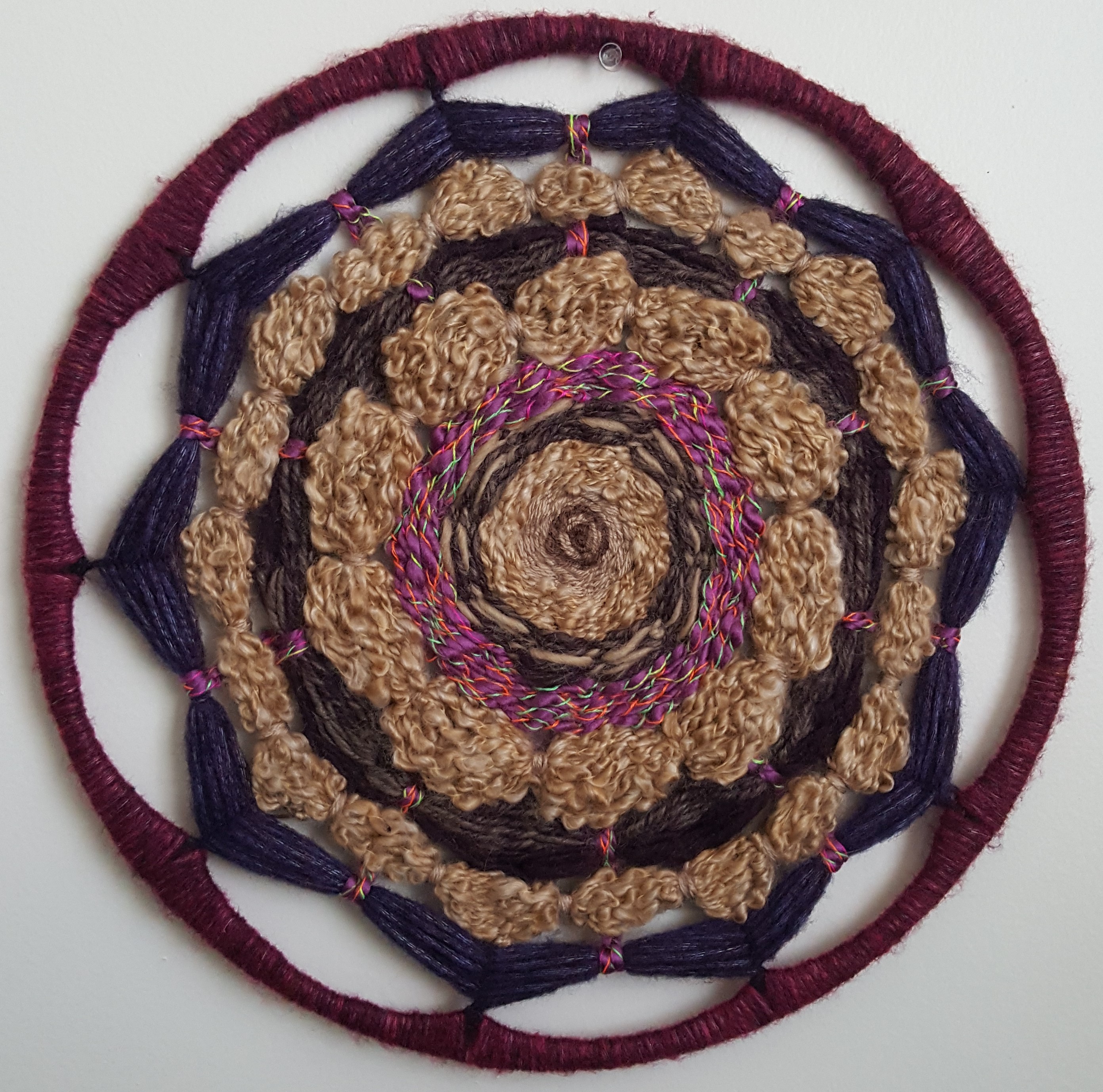January 15, 2020
 Tell us about yourself
Tell us about yourself
I love education! I am Assistant Professor of Creative Arts Therapy at West Liberty University. I hold a PhD in Expressive Therapies from Lesley University, an MA in Mental Health Counseling and Art Therapy from Caldwell University, NJ, and a MSc in Human Services from Springfield College. I work as an Adjunct Professor at Saint Mary-of-the-Woods College, Terre Haute, IN. My research interest is in identity including broken identity, self-care, and arts-based research. I have over 25 years’ experience working with diverse communities of various ages, abilities and disabilities including substance abuse problems, mental health issues, developmental disabilities, and physical impairments. As an artist, I specialize in landscapes, seascapes, animals and murals. I love community arts and mural painting (the bigger the better) and recently got hooked on fiber arts and basket making.
What excites (or inspires) you most about your job right now?
I am very fortunate to have the opportunity to develop a graduate Art Therapy and Counseling program at West Liberty University in West Virginia. The State is in dire need of mental health and substance abuse practitioners, and this master’s degree will help address community needs. We have initial approval to develop the program, and the full proposal is in the approval process. The degree will be a low residency/online program to meet the needs of working professionals. The hope is to launch the program in the Fall of 2021 (with approvals). The curriculum is aligned to the education standards of both art therapy accreditation (CAAHEP) and counseling accreditation (CACREP). After many years working clinically with diverse populations, it is great to be able to give back to the community and to teach the next generation. At this time of my life, it is important for me to think about legacy and to pass on the torch of education and experience to aspiring art therapists and counselors.
Has working with a particular client group shaped your professional focus or specialty? What have you learned from working with these clients?
Since entering full time teaching, working with students has really shaped my work as a therapist and educator. My students are so inspiring, and although they can be challenging at times, they help me to really examine how I interact with others. They are also a reminder of “walking the talk” and to fully engage in my own art and self-care practices. My research students come up with some interesting studies which in turn inspires me to continue in my own investigations. Working with students inspires me to continue working on my own growth.
What advice would you give someone interested in pursuing a career in art therapy?
Use all the resources at the college/university which are available to you. This includes asking advice from your professors, creating support between students, using the counseling services as needed, and engaging in community events. Post-graduation, utilize the resources around you including attending conferences, networking with professionals in the field, and working with a supervisor and consult with others as needed. Helping vulnerable people make positive changes in their lives is very rewarding — it is also challenging, so please continue working on your art as well as self-care.
What are your hopes for the future of the art therapy profession?
My hopes for the future of art therapy includes increased tolerance and acceptance of multiple perspectives and points of view, respect for those who disagree, and inclusion of people with diverse abilities and disabilities.
Is there anything else you would like to share?
It is very important to continue making your own art, after all, it is the foundation of art therapy and the reason why you chose this career. Art will keep you grounded, it is a source of healing, and will help you process your own struggles as well as your responses to the people you work with.

“Mandala Flower” by Susan Ridley. Fiber Arts Weave, Diameter 14.5.” July 2019.
Artist’s statement: A Mandala is a Sanskrit word that loosely translates to mean “circle” or “center.” Throughout history, circles have represented the divine, infinite, or a path between inner and outer worlds. In Hindu and Buddhist traditions, Mandalas are an object of meditation to aid in one’s spiritual development. For the Chinese, a Mandala represented the Tao (Divine, Universe, God) in a Ying and Yang symbol that coexists in a Cosmic Dance continuously transforming each other. In Christianity, they can be seen in rose windows, rosary, and halos. The Celtic spirals and knot work represents a journey or movement in and out of the world, and for Native Americans they are seen in the medicine wheel, dream catchers, and shields. In Jungian psychology, a Mandala is symbolic of the inner process by which individuals grow toward fulfilling their potential for wholeness or individuation. The Mandala Flower fiber art represents the archetype of the self and a journey to create balance of psychological and spiritual health. It was constructed using a macrame ring and assorted threads. The fiber art evolved organically, starting at the center of the Mandala working outwards. Threads and patterns were chosen to compliment or contrast, to balance or create texture. Often incomplete Mandalas live on the wall until inspiration dictates the next movement, and they are completed when they feel whole.
